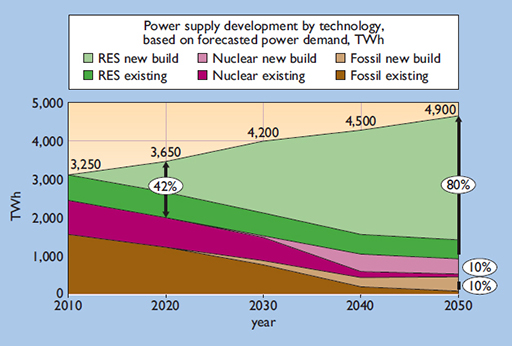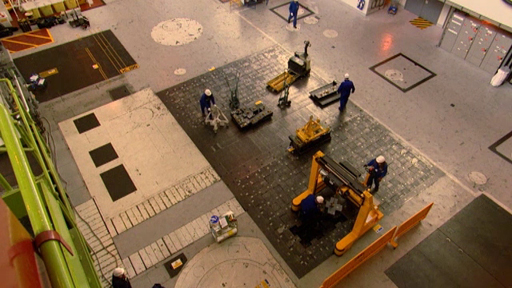6 Renewable energy scenarios for Europe
Can renewable energies provide all, or most, of Europe’s electricity? That this is possible is the conclusion of a 2010 study by the European Climate Foundation (ECF), based on analysis by the consultancy McKinsey, Imperial College London and Oxford Economics, among others (ECF, 2010). It illustrates various pathways to a ‘Prosperous, Low Carbon Europe’, in which the renewable electricity contributions range from 40% to 100%.
Figure 5 describes one such pathway, ECF’s 80% renewable electricity scenario, with hydro, solar, wind, biomass and geothermal energy growing to provide 80% of Europe’s electricity by 2050.

Unlike some of the scenarios we’ve been discussing, the ECF scenario envisages a continuing role in Europe for nuclear power, alongside a major contribution from renewables, with new reactors replacing the existing fleet.
Watch the following video where the interviewee discusses the track record of the United Kingdom on nuclear power, and whether it would be preferable for the UK to invest in energy efficiency and renewables instead of building new nuclear plants.

Transcript
If you would like to explore the pros and cons of nuclear power in more detail, have a look at the arguments for and against in the OpenLearn free course Nuclear power: friend or foe? [Tip: hold Ctrl and click a link to open it in a new tab. (Hide tip)] .
So what are the implications for renewable energy of the proposed European supergrids and DESERTEC? You‘ll look at this in the next section.
